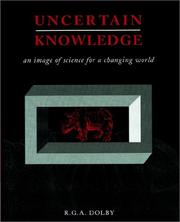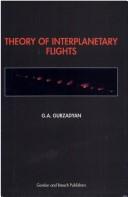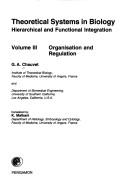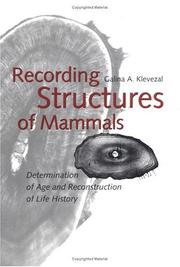| Listing 1 - 10 of 80 | << page >> |
Sort by
|

ISBN: 0521560047 0521892627 0511628722 Year: 1996 Publisher: Cambridge : Cambridge University Press,
Abstract | Keywords | Export | Availability | Bookmark
 Loading...
Loading...Choose an application
- Reference Manager
- EndNote
- RefWorks (Direct export to RefWorks)
What is science? How is scientific knowledge affected by the society that produces it? Does scientific knowledge directly correspond to reality? Can we draw a line between science and pseudo-science? Will it ever be possible for computers to undertake scientific investigation independently? Is there such a thing as feminist science? In this book the author addresses questions such as these using a technique of 'cognitive play', which creates and explores new links between the ideas and results of contemporary history, philosophy, and sociology of science. New ideas and approaches are applied to a wide range of case studies, many of them from controversial and contested science. This book will be of interest to historians and sociologists of science, to anyone interested in science studies, and to educated general readers with an interest in the history, philosophy, and social context of science.
Science --- Sciences --- Philosophy --- Philosophie --- -Natural science --- Science of science --- Philosophy. --- -Philosophy --- Normal science --- Philosophy of science --- Arts and Humanities --- History

ISBN: 2919875159 2884490744 9782919875153 9782884490740 Year: 1996 Publisher: Amsterdam: Gordon and Breach,
Abstract | Keywords | Export | Availability | Bookmark
 Loading...
Loading...Choose an application
- Reference Manager
- EndNote
- RefWorks (Direct export to RefWorks)
Celestial mechanics. --- Interplanetary voyages. --- Space flight. --- Mécanique céleste --- Voyages interplanétaires --- Vol spatial --- Celestial mechanics --- Mécanique céleste --- Voyages interplanétaires
Book
ISBN: 0521338654 9780521338653 Year: 1996 Publisher: Cambridge: Cambridge university press,
Abstract | Keywords | Export | Availability | Bookmark
 Loading...
Loading...Choose an application
- Reference Manager
- EndNote
- RefWorks (Direct export to RefWorks)
Mythologie grecque. --- Religion grecque --- Mythology [Greek ] --- Greece --- Civilization --- To 146 B.C. --- Mythologie grecque --- Mythology, Greek --- Greece - Civilization - To 146 B.C.
Book
ISBN: 9075146035 Year: 1996 Publisher: Rotterdam : Staalbouw Instituut,
Abstract | Keywords | Export | Availability | Bookmark
 Loading...
Loading...Choose an application
- Reference Manager
- EndNote
- RefWorks (Direct export to RefWorks)
Article
Year: 1996
Abstract | Keywords | Export | Availability | Bookmark
 Loading...
Loading...Choose an application
- Reference Manager
- EndNote
- RefWorks (Direct export to RefWorks)
Scent identification lineups by dogs (Canis familiaris) are performed differently in different countries, but basically follow a match-to-sample-like protocol. Different experimental designs were tested using certified Dutch police tracker dog/handler combinations. The standard scent identification lineup design currently used in the Netherlands is compared with an older design and with two new designs that cater for varying motivation, individual preferences and physical limitations of the dogs. The designs are evaluated on performance and forensic prerequisites. Experimental design significantly affects the performance of the combinations: incorporating a control trial as an obligatory 'calibration' for the dog leads to the best results and meets the most forensic prerequisites.
Application. --- Canis-familiaris. --- Canis. --- Control. --- Design. --- Dog. --- Dogs. --- Identification. --- Learning. --- Motivation. --- Performance. --- Physical. --- Preference. --- Preferences. --- Scent.
Article
Year: 1996 Publisher: Groot-Bijgaarden : VUM,
Abstract | Keywords | Export | Availability | Bookmark
 Loading...
Loading...Choose an application
- Reference Manager
- EndNote
- RefWorks (Direct export to RefWorks)

ISBN: 0627021344 9780627021343 Year: 1996 Publisher: Pretoria : van Schaik,
Abstract | Keywords | Export | Availability | Bookmark
 Loading...
Loading...Choose an application
- Reference Manager
- EndNote
- RefWorks (Direct export to RefWorks)

ISBN: 008041995X Year: 1996 Publisher: Oxford Pergamon
Abstract | Keywords | Export | Availability | Bookmark
 Loading...
Loading...Choose an application
- Reference Manager
- EndNote
- RefWorks (Direct export to RefWorks)
Book
Year: 1996 Publisher: Lelystad IVIO
Abstract | Keywords | Export | Availability | Bookmark
 Loading...
Loading...Choose an application
- Reference Manager
- EndNote
- RefWorks (Direct export to RefWorks)

ISBN: 9054106212 Year: 1996 Publisher: Rotterdam, Netherlands ; Brookfield, VT : A. A. Balkema,
Abstract | Keywords | Export | Availability | Bookmark
 Loading...
Loading...Choose an application
- Reference Manager
- EndNote
- RefWorks (Direct export to RefWorks)
This book is focused on the principals and methods of using growth layers formed in teeth and bones of mammals and to make a judgement on essential traits of the animal's life history. Nearly in all mammalian species including man, the age of individuals can be determined from the number of growth layers and, at least in some of them, it is possible to estimate the season of an animal's birth and death, the age of sexual maturation, periodicity of reproduction, certain feeding habits and other aspects of the individual's biology. It is also possible, from tooth enamel analysis, to assess dose of radiation accumulated by animals and human beings during their lifetime. . The book is intended mainly for zoologists, wild-game biologists, and zoo-archaeologists, but some of the sections can also be of interest for anthropologists, radio-ecologists and conservation biologists.
Animals --- Mammals --- Animaux --- Mammifères --- Age determination. --- Age --- Détermination
| Listing 1 - 10 of 80 | << page >> |
Sort by
|

 Search
Search Feedback
Feedback About UniCat
About UniCat  Help
Help News
News